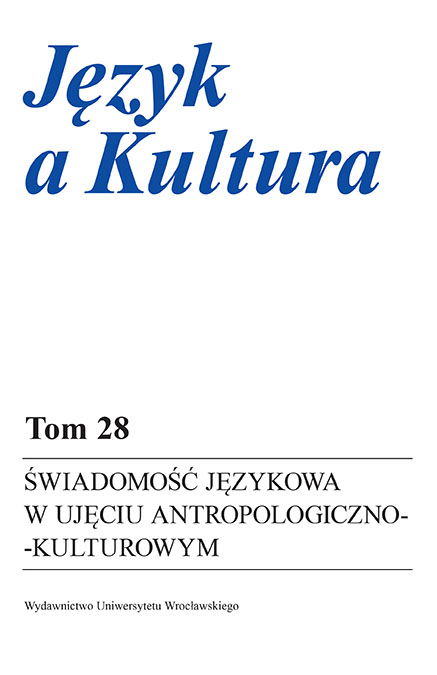Gwara w świadomości mieszkańców wsi
(na przykładzie Kielecczyzny
i Opoczyńskiego)
Dialect in the consciousness of rural inhabitants
(the example of Kielce and Opoczno regions)
Author(s): Stanisław CyganSubject(s): Sociolinguistics, Stylistics
Published by: Wydawnictwo Uniwersytetu Wrocławskiego
Keywords: Polish dialectology; Kielce region; Opoczno region; folk language; language awareness;
Summary/Abstract: The subject matter of the article is the way in which the rural population of two regions,namely Kielce and Opoczno, sees their language. Field studies were conducted in 2018, involvingmainly the oldest residents of the village of Lasocin, Kielce County (1993–1997 and later) and 40villages in Opoczno County in 2018. The responses, recorded using a voice recorder, show that theytreat dialect as a variety of language of a limited geographical range: mainly local (borders of onevillage, several neighbouring villages); regional (e.g. Silesia, Kaszuby, Kielce, Opoczno, Podhale,Kurpie and others), characteristic of the oldest generation. The dialect is also, in their opinion,a vital indicator of local identity, an essential element of community ties (cf. mówić po nasemu).The dialect in the consciousness of the speakers is distinguished by certain linguistic features fromthe phonetic subsystem, e.g. a narrowed vowel articulation a→o, e→i, y, articulation broadening i,y→e, e.g. piełka, bieł, beła, labialisation of the initial o, denasalisation of nasal vowels ą→o, ę→e,and lexis, e.g. kaj, źmioki, zaściegacka, podwyrze, plindze, nizinier.
Journal: Język a Kultura
- Issue Year: 2021
- Issue No: 28
- Page Range: 25-43
- Page Count: 19
- Language: Polish

